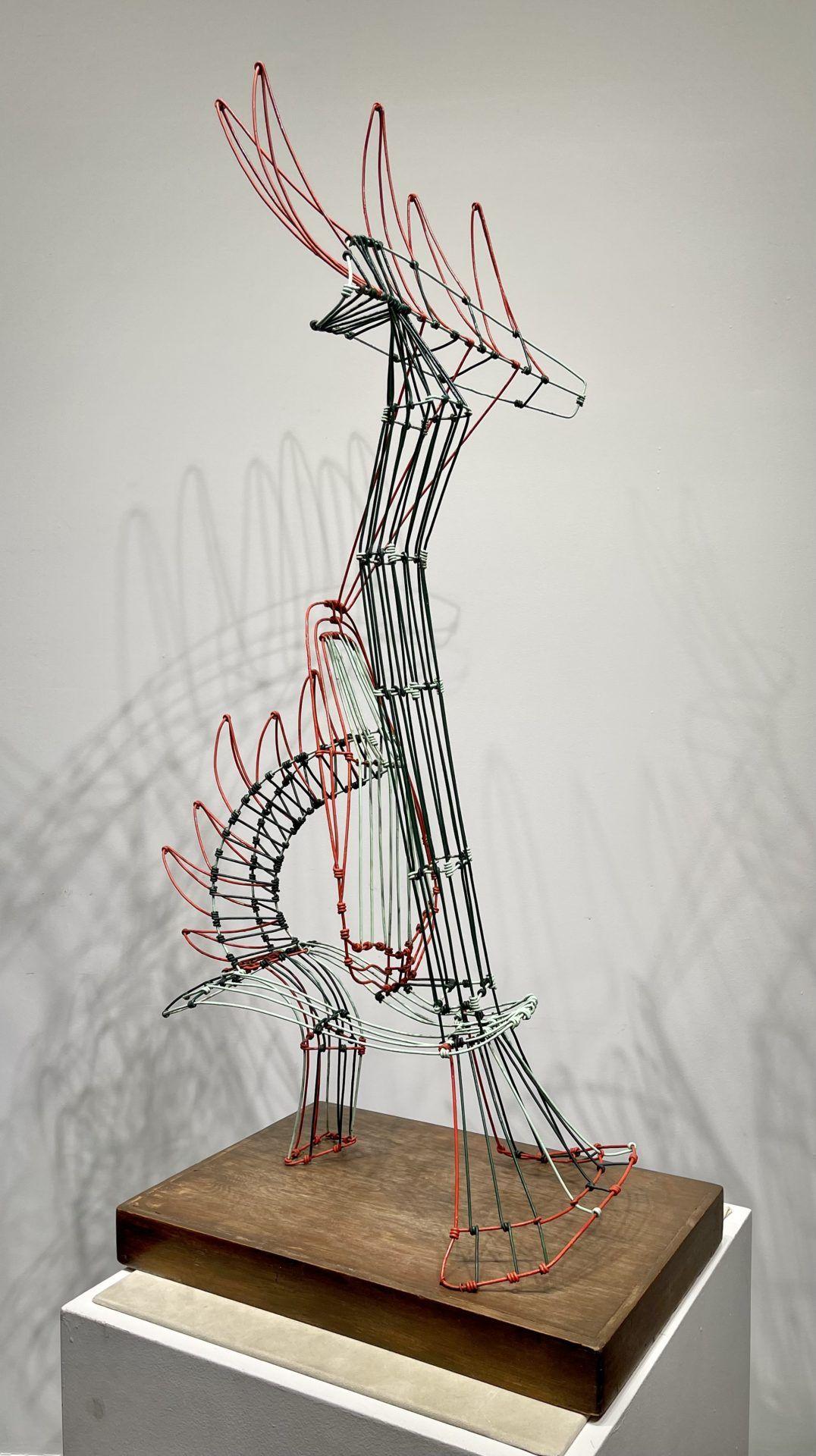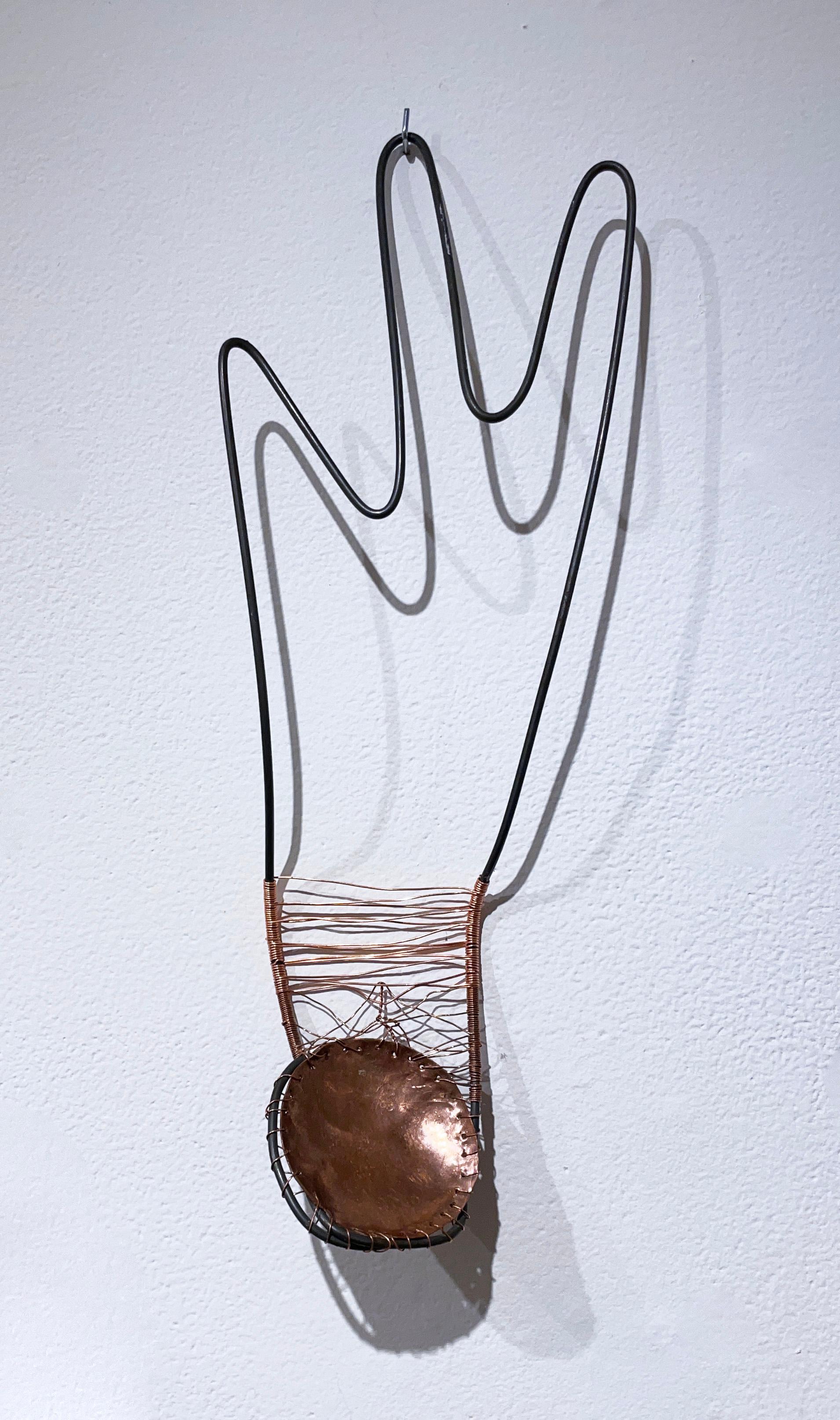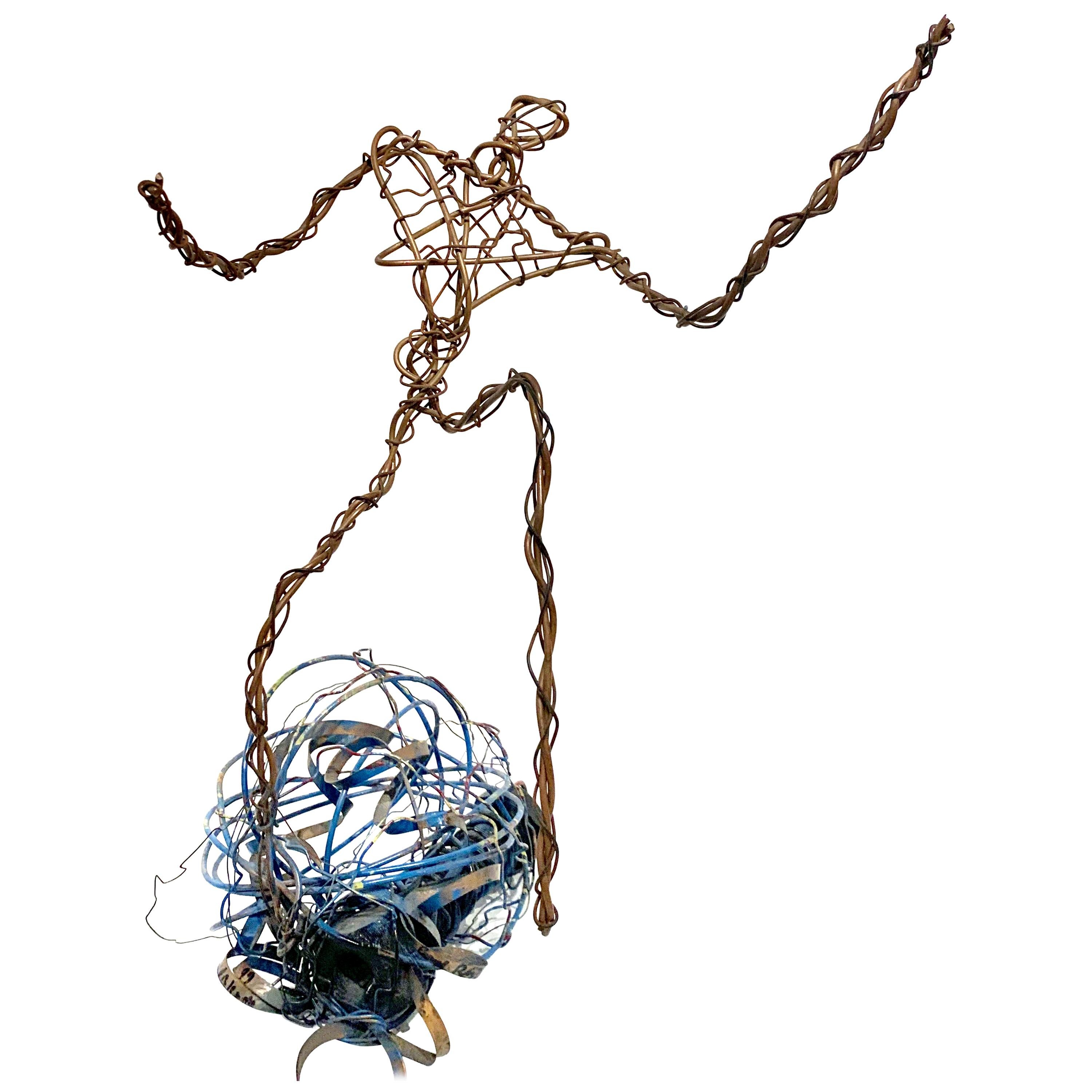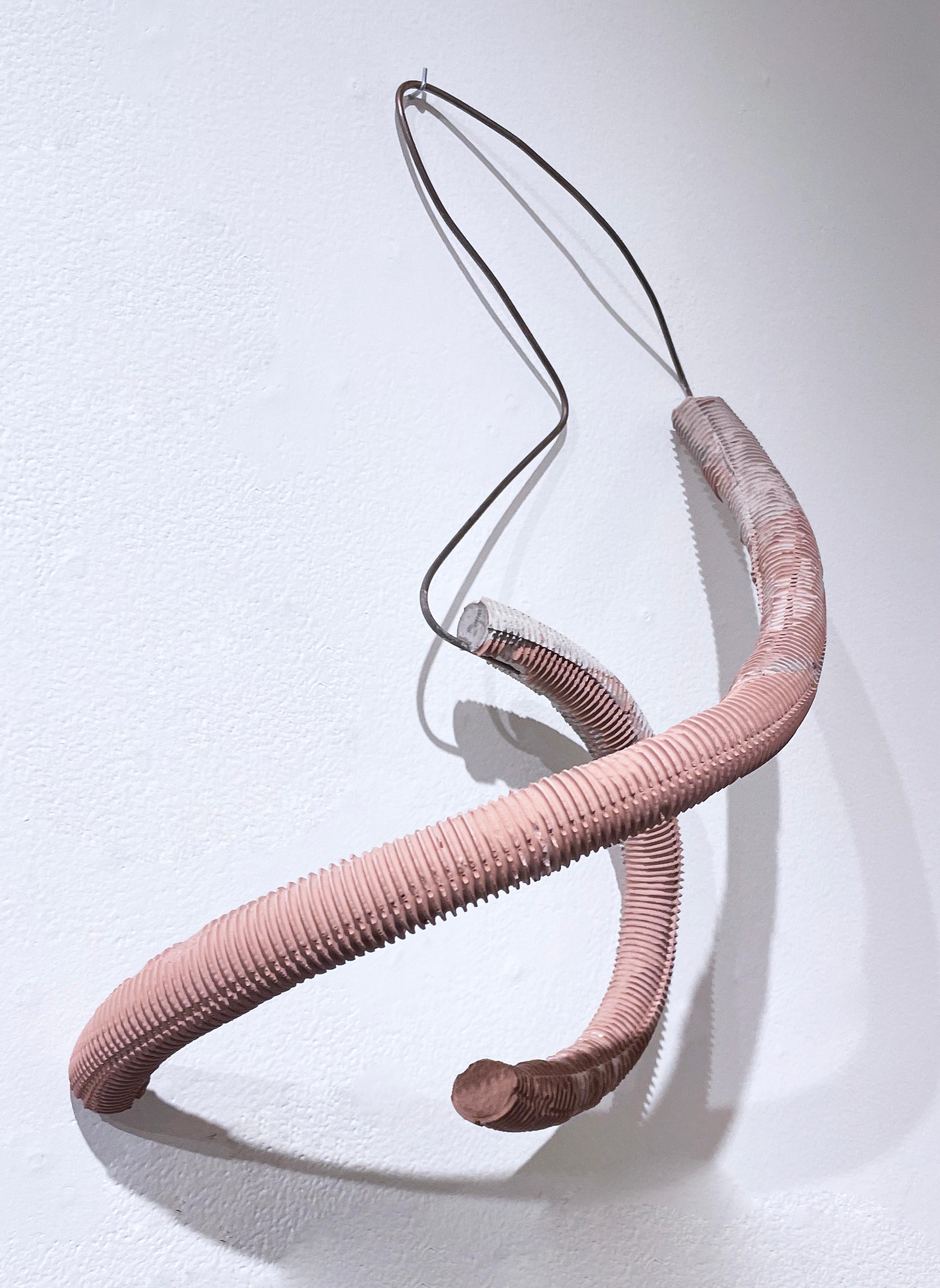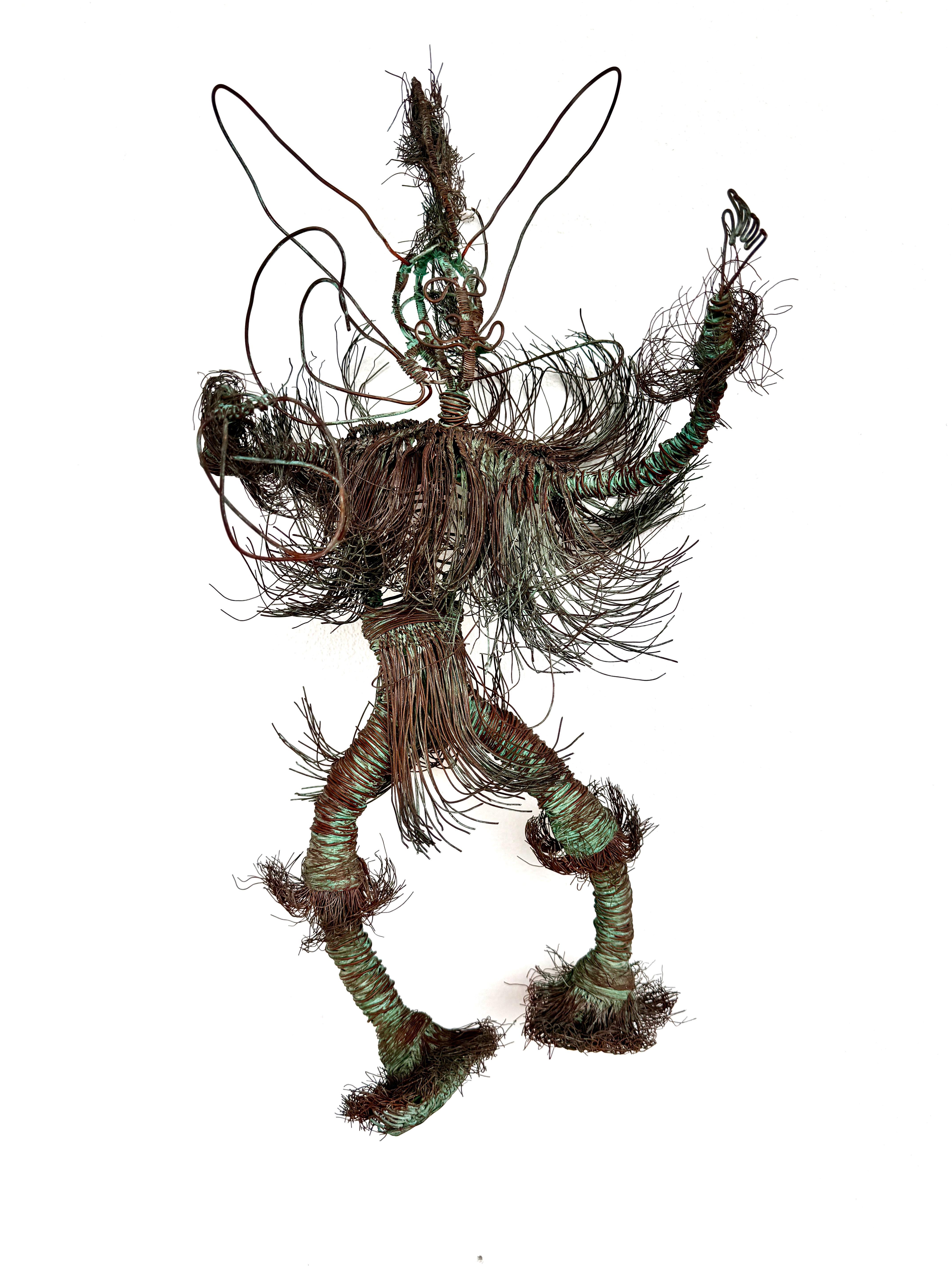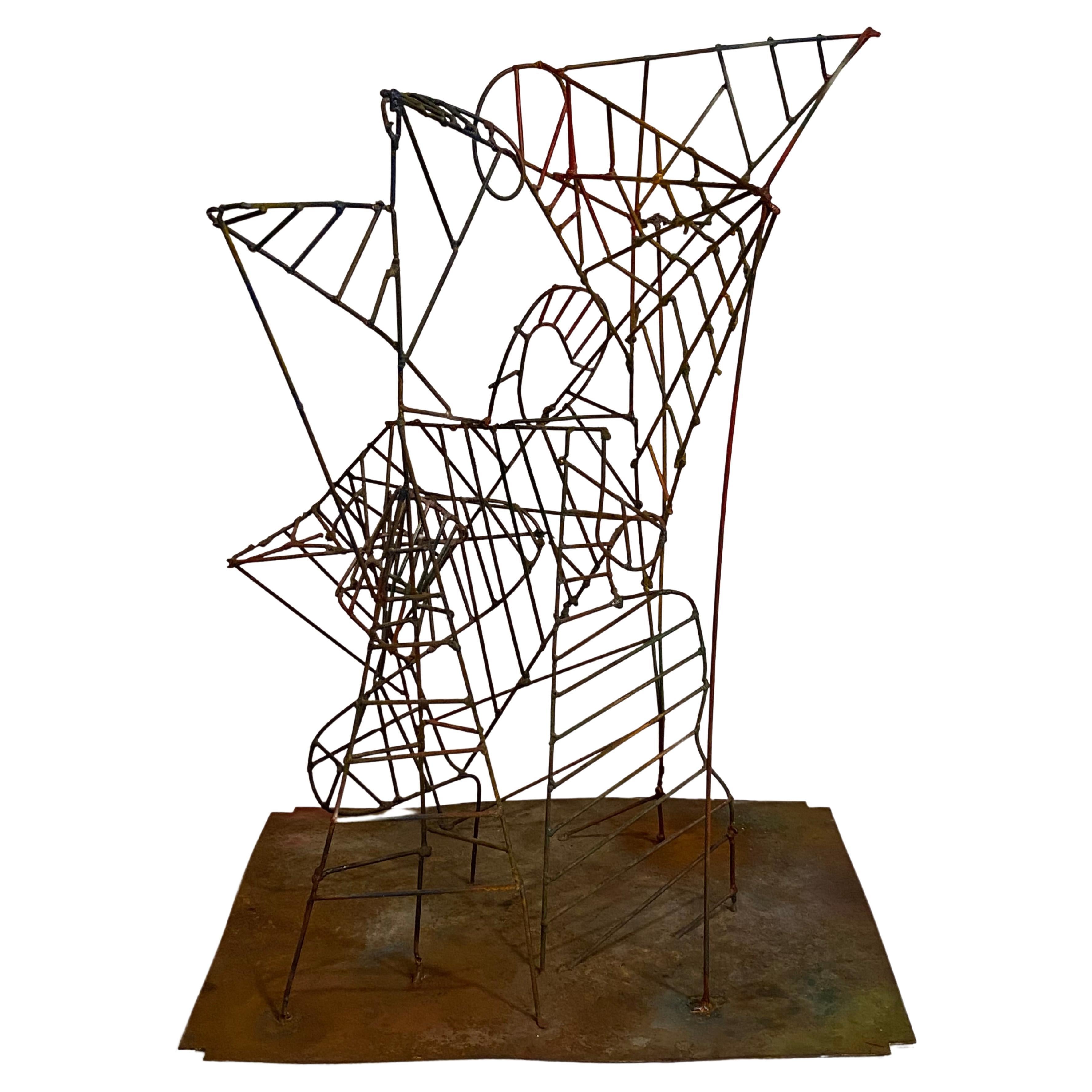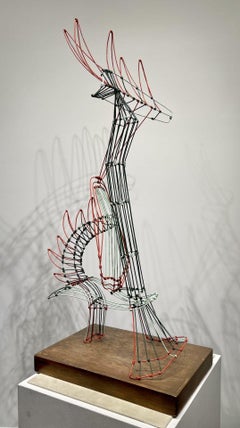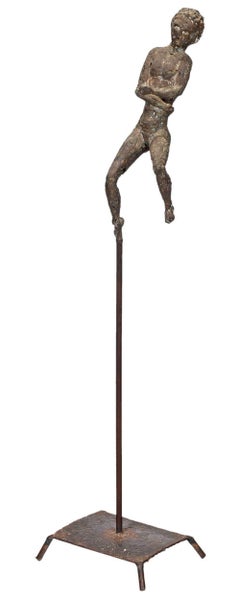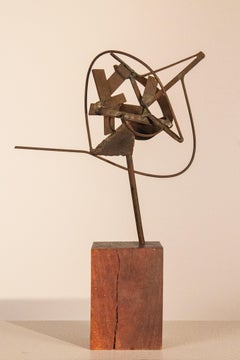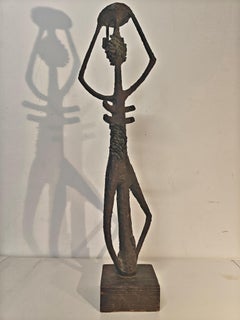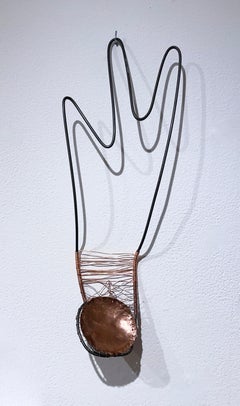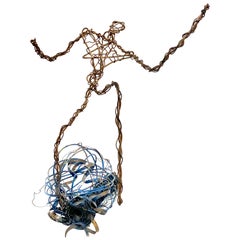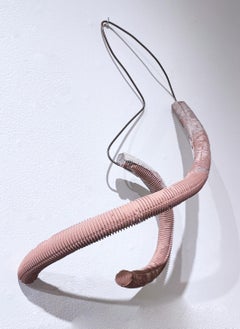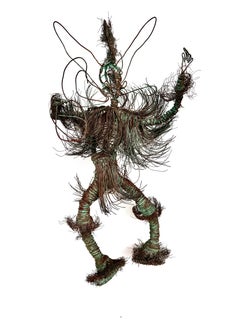Items Similar to "Hitch Hiked" Hayward Oubre, Painted Wire Sculpture, Southern Black Artist
Want more images or videos?
Request additional images or videos from the seller
1 of 2
Hayward Oubre"Hitch Hiked" Hayward Oubre, Painted Wire Sculpture, Southern Black Artistcirca 1960
circa 1960
$50,000
£38,227.66
€44,030.54
CA$70,065.33
A$78,221.35
CHF 40,986.81
MX$957,506.13
NOK 520,532.93
SEK 490,796.46
DKK 328,604.48
Shipping
Retrieving quote...The 1stDibs Promise:
Authenticity Guarantee,
Money-Back Guarantee,
24-Hour Cancellation
About the Item
Hayward Oubre
Hitch Hiked, 1960
Signed on Base: OUBRE 60
Painted wire sculpture
45 H. x 21 W. x 19 D. inches
Provenance:
Estate of the Artist
Deeply attached to his Southern heritage, Hayward Louis Oubre Jr. relied on childhood memories to create paintings and prints portraying African American life in his hometown of New Orleans. However, he is best remembered today for works that transcend any regionalist influences: airy wire sculptures that are celebrated for their resilience, strength, balance, and engineering mastery.
Born to a family of African and French descent, Oubre’s youthful artistic talent was encouraged in the New Orleans parochial schools he attended. Following high school, he enrolled at Dillard University, where he was a standout member of the football and track teams, an illustrator for the college newspaper, and the institution’s first art major. Upon his graduation in 1939, Oubre continued his studies at Atlanta University, thriving under the tutelage of painter and muralist Hale Woodruff and sculptor Nancy Elizabeth Prophet, who encouraged Oubre to submit his work to the annual Atlanta University exhibitions. In 1941, Oubre was assigned to help with a special art initiative at Tuskegee Institute, where he met George Washington Carver, an admirer of the fledgling artist’s work.
Oubre temporarily relinquished his artistic pursuits later in 1941 when he was drafted into military service. Serving with the Army Corps of Engineers during World War II, Oubre joined 3,700 African American soldiers charged with building a 1500-mile military supply route—now known as the Alcan Highway—that connected Alaska to the continental United States. These soldiers labored under brutal conditions to complete the assignment in eight months.
Thanks to the GI Bill, Oubre was able to continue his education in art at the University of Iowa, earning his master’s degree from the University of Iowa. He then launched an extended career as an art educator at a series of historically black colleges and universities: Florida Agricultural and Mechanical College for Negroes (1948‒1949); Alabama State College (1949‒1965); and, finally, at Winston-Salem State University (1965‒1981), where he initiated the studio art program. Over three decades, Oubre mentored countless aspiring African American artists and embraced an “open studio concept” which allowed pupils to advance at their own pace. In an effort to provide his painting students with the proper learning material, Oubre conceived and copyrighted “a concise study of color mixing and color relationships” using a color wheel that updated and expanded the 1810 color triangle developed by Johann Wolfgang von Goethe.
Oubre's two-dimensional works feature simplified, sometimes abstracted, forms that reflect the artist’s familiarity with Picasso’s Analytic and Synthetic Cubism. While he had previously employed clay and wood to create closed-form sculptures, it was during his tenure at Alabama State College in the 1950s that Oubre began fabricating his acclaimed wire sculptures. As he slowly and delicately shaped ordinary wire clothes hangers with hand pliers, the artist confronted structural challenges that demanded a considerable amount of strength and, at times, physical pain, to overcome. Nicknamed by his students as the “master of torque,” Oubre detailed his method in his 1960 publication, The Art of Wire Sculpture. One reviewer writing of Oubre’s sculptures opined that “light and air are as critical to the work as the metal that gives them definition.”
Although Oubre’s work was not widely exhibited during his lifetime, his oeuvre has attracted increased curatorial attention and examples of his work are represented in the collections of the Metropolitan Museum of Art, the Mint Museum of Art, and the University of Delaware. In 1993, the Pentagon honored Oubre and other surviving soldiers from the Alcan Highway battalion for their service.
About the Seller
5.0
Platinum Seller
Premium sellers with a 4.7+ rating and 24-hour response times
Established in 2022
1stDibs seller since 2022
115 sales on 1stDibs
Typical response time: <1 hour
- ShippingRetrieving quote...Shipping from: New York, NY
- Return Policy
Authenticity Guarantee
In the unlikely event there’s an issue with an item’s authenticity, contact us within 1 year for a full refund. DetailsMoney-Back Guarantee
If your item is not as described, is damaged in transit, or does not arrive, contact us within 7 days for a full refund. Details24-Hour Cancellation
You have a 24-hour grace period in which to reconsider your purchase, with no questions asked.Vetted Professional Sellers
Our world-class sellers must adhere to strict standards for service and quality, maintaining the integrity of our listings.Price-Match Guarantee
If you find that a seller listed the same item for a lower price elsewhere, we’ll match it.Trusted Global Delivery
Our best-in-class carrier network provides specialized shipping options worldwide, including custom delivery.More From This Seller
View All"The Trap" Hayward Oubre, Painted Wire Sculpture, Black Artist
Located in New York, NY
Hayward Oubre
The Trap, c. 1960
Painted wire sculpture
40 H. x 16 1/2 W. x 21 D. inches
Provenance:
Estate of the Artist
Deeply attached to his Souther...
Category
1960s Figurative Sculptures
Materials
Wire
"Dancer" David Hare, Male Nude, Figurative Sculpture, Mid-Century Surrealist
By David Hare
Located in New York, NY
David Hare
Dancer, circa 1955
Bronze with integral stand
68 high x 17 wide x 13 1/2 deep inches
“Freedom is what we want,” David Hare boldly stated in 1965, but then he added the caveat, “and what we are most afraid of.” No one could accuse David Hare of possessing such fear. Blithely unconcerned with the critics’ judgments, Hare flitted through most of the major art developments of the mid-twentieth century in the United States. He changed mediums several times; just when his fame as a sculptor had reached its apogee about 1960, he switched over to painting. Yet he remained attached to surrealism long after it had fallen out of official favor. “I can’t change what I do in order to fit what would make me popular,” he said. “Not because of moral reasons, but just because I can’t do it; I’m not interested in it.”
Hare was born in New York City in 1917; his family was both wealthy and familiar with the world of modern art. Meredith (1870-1932), his father, was a prominent corporate attorney. His mother, Elizabeth Sage Goodwin (1878-1948) was an art collector, a financial backer of the 1913 Armory Show, and a friend of artists such as Constantin Brancusi, Walt Kuhn, and Marcel Duchamp.
In the 1920s, the entire family moved to Santa Fe, New Mexico and later to Colorado Springs, in the hope that the change in altitude and climate would help to heal Meredith’s tuberculosis. In Colorado Springs, Elizabeth founded the Fountain Valley School where David attended high school after his father died in 1932. In the western United States, Hare developed a fascination for kachina dolls and other aspects of Native American culture that would become a recurring source of inspiration in his career.
After high school, Hare briefly attended Bard College (1936-37) in Annandale-on-Hudson. At a loss as to what to do next, he parlayed his mother’s contacts into opening a commercial photography studio and began dabbling in color photography, still a rarity at the time [Kodachrome was introduced in 1935]. At age 22, Hare had his first solo exhibition at Walker Gallery in New York City; his 30 color photographs included one of President Franklin Roosevelt.
As a photographer, Hare experimented with an automatist technique called “heatage” (or “melted negatives”) in which he heated the negative in order to distort the image. Hare described them as “antagonisms of matter.” The final products were usually abstractions tending towards surrealism and similar to processes used by Man Ray, Raoul Ubac, and Wolfgang Paalen.
In 1940, Hare moved to Roxbury, CT, where he fraternized with neighboring artists such as Alexander Calder and Arshile Gorky, as well as Yves Tanguy who was married to Hare’s cousin Kay Sage, and the art dealer Julian Levy. The same year, Hare received a commission from the American Museum of Natural History to document the Pueblo Indians. He traveled to Santa Fe and, for several months, he took portrait photographs of members of the Hopi, Navajo, and Zuni tribes that were published in book form in 1941.
World War II turned Hare’s life upside down. He became a conduit in the exchange of artistic and intellectual ideas between U.S. artists and the surrealist émigrés fleeing Europe. In 1942, Hare befriended Andre Breton, the principal theorist of surrealism. When Breton wanted to publish a magazine to promote the movement in the United States, he could not serve as an editor because he was a foreign national. Instead, Breton selected Hare to edit the journal, entitled VVV [shorth for “Victory, Victory, Victory”], which ran for four issues (the second and third issues were printed as a single volume) from June 1942 to February 1944. Each edition of VVV focused on “poetry, plastic arts, anthropology, sociology, (and) psychology,” and was extensively illustrated by surrealist artists including Giorgio de Chirico, Roberto Matta, and Yves Tanguy; Max Ernst and Marcel Duchamp served as editorial advisors.
At the suggestion of Jacqueline Lamba...
Category
1950s Abstract Figurative Sculptures
Materials
Bronze
$20,000 Sale Price
20% Off
"Untitled" Sidney Gordin, Abstract Metal Steel Sculpture
By Sidney Gordin
Located in New York, NY
Sidney Gordin
Untitled, 1958
Incised with initials
Welded Steel
15 x 10 1/2 x 6 inches
Provenance:
Eric Firestone Gallery, New York
On October 24, 1918, Sidney Gordin was born in Chelyabinsk, Russia. He spent his early years in Shanghai, China. At the age of four, he moved with his family to New York. Gordin’s nephew, Eliot Nemzer recalls that when Gordin was a child he attended “a dinner party with his parents. Someone showed him a book of pictures that when thumbed through quickly made the image appear to move. This person then gave him a wad of blank papers and something to write with. Sid created a similar type of moving image with his materials. All the adults at the party became quite excited [and] praised his efforts. Sid told me he thought this was a pivotal experience in guiding him towards his vocation.” During his formative years at Brooklyn Technical High School, he briefly contemplated the idea of becoming an architect; yet, by the time he enrolled at Cooper Union, he was determined to become a professional artist. There, he studied under Morris Kantor (1896-1974) and Leo Katz...
Category
1950s Abstract Abstract Sculptures
Materials
Steel
$11,200 Sale Price
20% Off
"Untitled" David Hare, Surrealist, Anthropomorphic, Modernist, Ab-Ex Sculpture
By David Hare
Located in New York, NY
David Hare
Untitled, circa 1949
Bronze
25 x 8 x 7 inches
Provenance
Kootz Gallery, New York
Collection of Samuel Kootz New York
Estate of the above
Collection of Dr. Joyce Kootz, Ne...
Category
1940s Surrealist Abstract Sculptures
Materials
Bronze
"Roland, " George Sugarman, Abstract Steel Sculpture
By George Sugarman
Located in New York, NY
George Sugarman (1912 - 1999)
Roland, 1970
Patinated steel
17 3/8 x 16 x 5 1/4 inches
Incised with the artist's signature and numbered "15/17" on the underside
Manufactured by Lippin...
Category
1970s Abstract Abstract Sculptures
Materials
Steel
"Monument 8" Calvin Marcus, Mixed Media Construction Contemporary Sculpture
Located in New York, NY
Calvin Marcus
Monument 8, 2018
Wood, glass, hot glue, cardboard, plastic, paper pulp, sulfur, ash, gesso, Cel-Vinyl, flashe, watercolor and other media sculpture
22" high x 13 1/4" w...
Category
2010s Contemporary Figurative Sculptures
Materials
Glass, Plastic, Wood, Paper, Glue, Mixed Media, Watercolor, Cardboard
$9,600 Sale Price
20% Off
You May Also Like
Wire Form with Three Peaks (2020), abstract geometric sculpture, copper, wire
By Dena Paige Fischer
Located in Jersey City, NJ
Biomorphic and earthy yet industrial style wall or tabletop sculpture. Abstract wire form with hammered copper plate and wrapped copper wire. ...
Category
2010s Abstract Abstract Sculptures
Materials
Wire, Copper
Wire and Pipe Sculpture
Located in San Diego, CA
Sculpture made of wire, pipe, with blue acrylic paint in portions. The signature is not clear, the best we can make of the signature is by E. Rizzuto. Title is also unclear "New D......
Category
20th Century North American Abstract Sculptures
Materials
Wire
$445 Sale Price
22% Off
Dancing Wire Form (2022), terracotta concrete abstract sculpture, metal wire
By Dena Paige Fischer
Located in Jersey City, NJ
Biomorphic and earthy yet industrial style wall or tabletop sculpture. Abstract wire form with corrugated hydrocal plaster form. The piece is smooth and...
Category
2010s Abstract Abstract Sculptures
Materials
Concrete, Wire
Bent Wire Wall Sculpture
By Walter Bastianetto
Located in Lake Worth Beach, FL
Bent Wire Wall Sculpture
Unsigned, from the artist collection.
Walter Bastianetto is an Italian born sculptor who moved to Mexico in the 1970s and resided there. Well-known artist ...
Category
1990s Modern Abstract Sculptures
Materials
Copper
Mid-Century Modern Skeletal Wire Rod Abstract Sculpture
Located in Garnerville, NY
An amazing spider's web of a rollercoaster of design and line. This sculpture is just as delicate and light filled like a spider's web. A work that reaches, careens, and zigzags Constantly changing maze of line and perspective. Comprised of welded metal rods and airbrushed in different colors. Circa 1960. Good overall condition with all welds intact. Some minor rust and pitting, but that just adds to the piece's outsider art charm. Clipped corners on the piece's base. Reminiscent of a small skeletal sculpture by the artist, Lee Bontecou...
Category
Vintage 1960s American Mid-Century Modern Outsider and Self Taught Art
Materials
Metal, Steel
$2,300 Sale Price
20% Off
Modernist Wire, Copper and Mache "Worlds Expansion" Albright Knox
Located in Buffalo, NY
Modernist wire. Copper and papier mâché "Worlds Expansion" Albright Knox, amazing hand executed sculpture, recently purchased from Buffalo NY estate, pos...
Category
Vintage 1960s American Mid-Century Modern Sculptures and Carvings
Materials
Copper, Wire
More Ways To Browse
Black Wire Sculpture
Vintage Wire Sculpture
Hand Painted Soldiers
Brutal Sculptures
Triangle Sculpture
Vintage Clothes Hangers
Vintage Torque
Vintage Metal Clothes Hangers
Hale Woodruff
Hayward Oubre
Modigliani Tete
Paolo Troubetzkoy
Rennert Inner Dialogue
Richard Macdonald Gymnast
Vespa Figurative Sculpture
Viktor Freso
Yuki Gray
Alhambra Gesso
